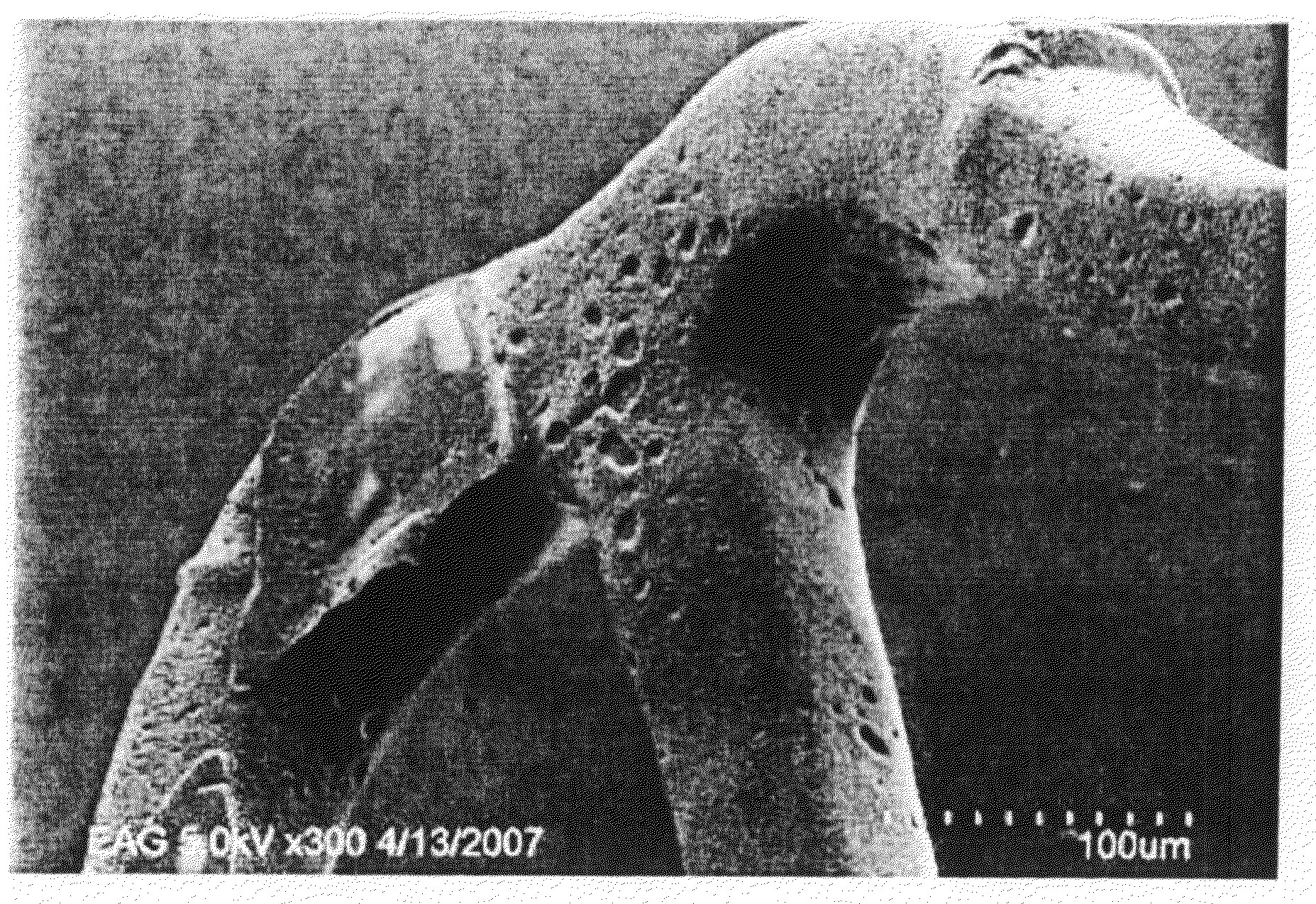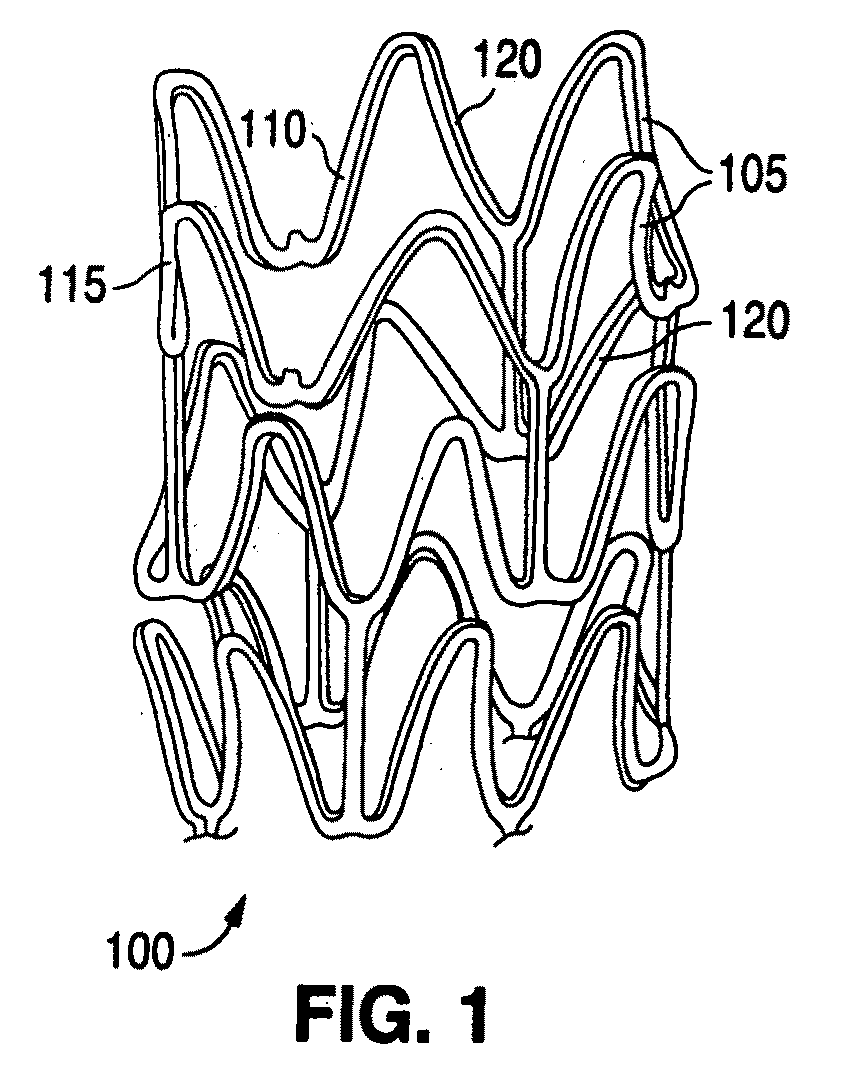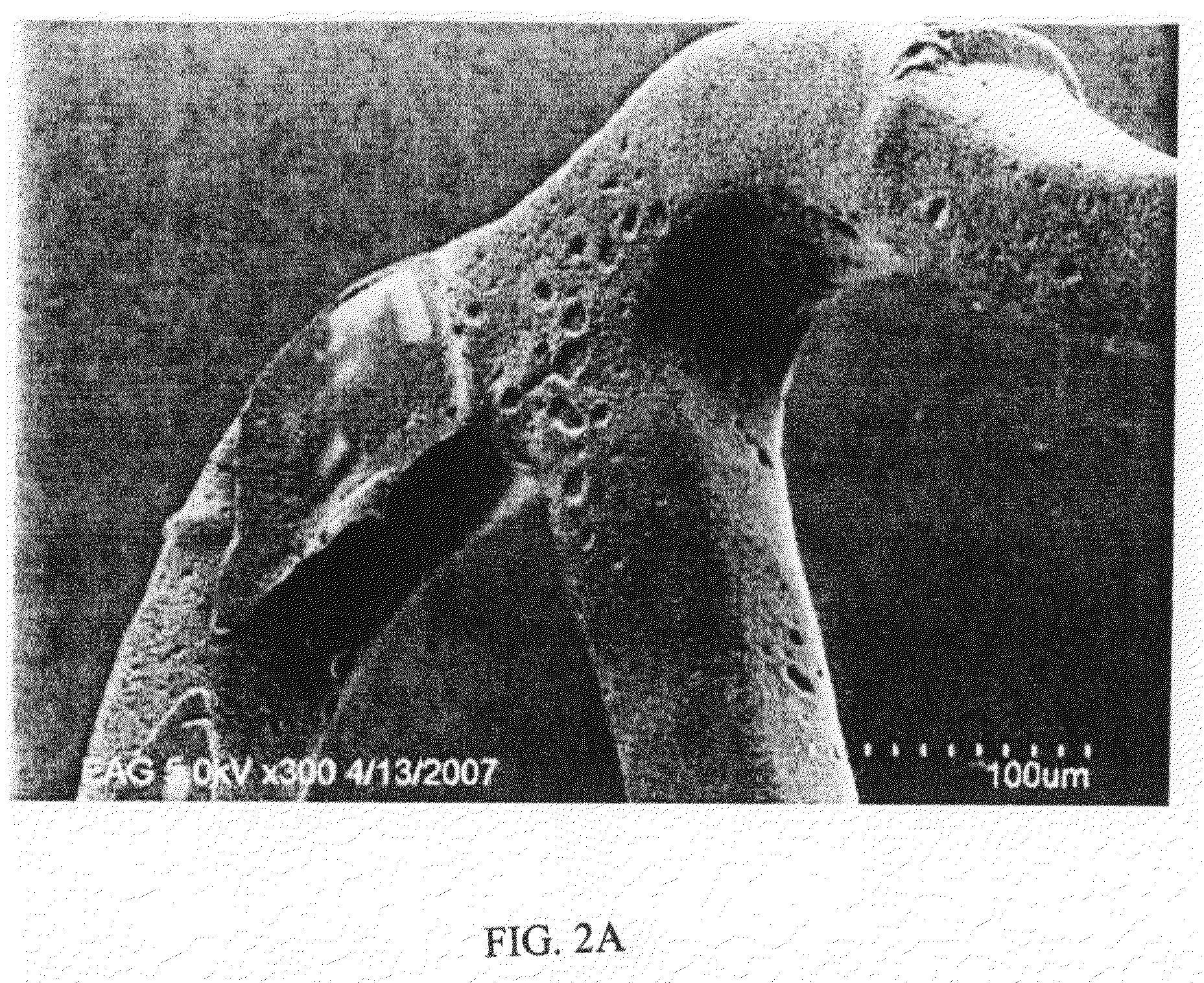Polymer blends for drug delivery stent matrix with improved thermal stability
a technology of thermal stability and polymer blends, which is applied in the direction of prosthesis, blood vessels, immunological disorders, etc., can solve the problems of occluded blood conduits, intimal flaps or torn arterial linings which can collapse, and significant problems for the medical community
- Summary
- Abstract
- Description
- Claims
- Application Information
AI Technical Summary
Benefits of technology
Problems solved by technology
Method used
Image
Examples
example 1
[0095]For a desired dose per surface area of 100 ug / cm3 of Everolimus for a small (12 mm) VISION™ stent (Advanced Cardiovascular Systems) the following coatings are prepared. The first step was to coat the exterior of the stent with approximately 55 μg of a primer which was PLGA amorphous polymer with a molar ratio of lactide to glycolide of 75 / 25, and was sprayed on from a solution (2% by weight solids) of a mixture of acetone and methyl-isobutyl ketone at a 9:1 ratio. The stent was cured, or placed in an oven, at 140° C. for 30 minutes. Then, PLGA 50 / 50 is blended with semi-crystalline PLLA at a 90:10 weight:weight ratio in chloroform. To the polymer blend in solvent, the drug, Everolimus, was added. The 1% by weight PLGA / PLLA / Everolimus solution (or dispersion) was sprayed onto the stent, and the solvent removed. The amount of additional material deposited onto the stent was approximately 112 μg of which about 56 μg was drug, Everolimus, and the balance is the polymer blend compo...
example 2
[0097]For a desired dose per surface area of 100 ug / cm3 of Everolimus for a small (12 mm) VISION™ stent (Advanced Cardiovascular Systems) the following coatings are prepared. The first step was to coat the exterior of the stent with approximately 55 μg of a primer which was PLGA amorphous polymer with a molar ratio of lactide to glycolide of 75 / 25 and was sprayed on from a solution of a mixture of acetone and methyl-isobutyl ketone at a 9:1 ratio. The stent was cured, or placed in an oven, at 140° C. for 30 minutes. Then, PLGA 75 / 25 was blended with semi-crystalline PLLA at a 90:10 weight:weight ratio in chloroform. To the polymer blend in solvent, the drug, Everolimus, was added. The 1% by weight PLGA / PLLA / Everolimus solution (or dispersion) was sprayed onto the stent, and the solvent removed. The amount of additional material deposited onto the stent was approximately 112 μg of which about 56 μg was drug, Everolimus, and the balance is the polymer blend composition. The stent is t...
example 3
Prospective Example of Coating Preparation
[0099]This prospective example is an illustration of how to formulate an exemplary embodiment of a coating of the present invention.
[0100]For a desired dose per surface area of 100 ug / cm3 of Everolimus for a small (12 mm) VISION™ stent (Advanced Cardiovascular Systems) the following coatings are prepared. The first step is to coat the exterior of the stent with approximately 55 μg of a primer which is PLGA amorphous polymer with a molar ratio of lactide to glycolide of 75 / 25 and is sprayed on from a solution of a mixture of acetone and methyl-isobutyl ketone at a 9:1 ratio. The stent is cured, or placed in an oven, at 140° C. for 30 minutes. Then, PLGA 50 / 50 is blended with semi-crystalline PLLA at a 75 / 25 weight (PLLA):weight(PLGA) ratio in chloroform. To the polymer blend in solvent, the drug, Everolimus, is added. The solution is sprayed onto the stent. The amount of additional material deposited onto the stent is approximately 112 μg of...
PUM
| Property | Measurement | Unit |
|---|---|---|
| glass transition temperature | aaaaa | aaaaa |
| time | aaaaa | aaaaa |
| dynamic shear loss modulus | aaaaa | aaaaa |
Abstract
Description
Claims
Application Information
 Login to View More
Login to View More - R&D
- Intellectual Property
- Life Sciences
- Materials
- Tech Scout
- Unparalleled Data Quality
- Higher Quality Content
- 60% Fewer Hallucinations
Browse by: Latest US Patents, China's latest patents, Technical Efficacy Thesaurus, Application Domain, Technology Topic, Popular Technical Reports.
© 2025 PatSnap. All rights reserved.Legal|Privacy policy|Modern Slavery Act Transparency Statement|Sitemap|About US| Contact US: help@patsnap.com



